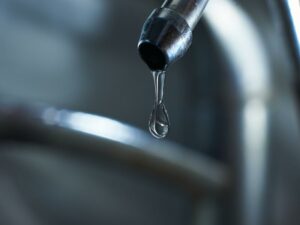For my birthday this year I got some fish. They were happy to see me and I was happy to see them. Long story short, they kept dying. 
After numerous trips to the pet store to have our water tested, & get chewed out for over feeding our fish, we found out that the real problem was with our water itself. The high levels of nitrogen and ammonia were too much for the fish to survive.
Well, all except our beta who is probably super happy to be by himself again. Upon research, we discovered that one of the ways to treat our water is through the process of Reverse Osmosis.
Now if you’re here, you’re probably like us & wondering, What IS Reverse Osmosis and how do you use it for the purposes you need. Well fam, that’s what we’re here to discuss right now.
Let’s embark on this journey of discovery, understanding and proper information together. So at any time you have a question, please leave it in the comments and we’ll be happy to find the answer for ya!
Additionally, if you have any information to add to our article, please feel free and comfortable to add value in the comments as well.
Now without further delay lets learn about reverse osmosis.
What Is Reverse Osmosis For Water?
(Click Here To What Is Reverse Osmosis For Water on YouTube)
Reverse osmosis (RO) is a water purification process that removes impurities and contaminants from water by utilizing pressure to force the water through a semipermeable membrane. It is a widely used method for producing clean drinking water, as well as for various industrial and commercial applications.
The process of reverse osmosis involves applying pressure to the water source, typically using a pump, and forcing it through a semipermeable membrane. This membrane has extremely tiny pores that allow water molecules to pass through while blocking larger molecules and impurities such as:

- salts
- minerals
- bacteria
- viruses
- and other contaminants
The pressure applied during the process helps overcome the natural osmotic pressure and allows the water to flow from an area of higher solute concentration to an area of lower solute concentration, effectively filtering out the impurities.
What Is Reverse Osmosis For Water Made Up Of?
Reverse osmosis systems typically consist of several components, including
- Pre-filter to remove larger particles and sediment
- Pressurization pump to increase the water pressure
- Semipermeable membrane
- Post-filter to further refine the water quality.
The purified water, known as permeate, is collected and stored for use, while the concentrated impurities, referred to as brine or reject water, are usually discharged or recycled.
Reverse osmosis is known for its ability to remove a wide range of contaminants, including dissolved solids, heavy metals, pesticides, chlorine, and other chemicals. It is widely used in residential settings for improving the taste and quality of drinking water, as well as in commercial and industrial applications such as desalination of seawater, wastewater treatment, and production of ultrapure water for various industries.
It’s important to note that while reverse osmosis is highly effective in purifying water, it also results in some water wastage due to the separation of impurities. The exact efficiency and water-to-waste ratio depend on the specific system and its configuration.
7 Things To Know Before Considering Reverse Osmosis

- Efficiency: Reverse osmosis is considered one of the most effective water purification methods available. It can remove up to 99% of dissolved contaminants, including minerals, salts, and organic compounds. The efficiency of the process depends on the quality of the feed water and the system’s design and maintenance.
- Applications: Reverse osmosis finds applications in various sectors. In addition to residential use, it is commonly used in commercial settings such as restaurants, hotels, and coffee shops to provide high-quality drinking water. Industrial applications include the production of bottled water, beverage manufacturing, pharmaceutical production, power generation, and electronic component manufacturing.
- Desalination: Reverse osmosis plays a crucial role in desalination, the process of converting seawater into freshwater. Seawater desalination plants utilize large-scale reverse osmosis systems to remove the salt and other impurities, making the water suitable for human consumption and agricultural use in regions with limited freshwater resources.
- Maintenance: Proper maintenance is important to ensure the longevity and efficiency of a reverse osmosis system. Regular cleaning and replacement of pre-filters, post-filters, and the semipermeable membrane are necessary to prevent clogging and maintain optimal performance. The frequency of maintenance depends on the feed water quality and the specific system used.
- Mineral Content: One consideration with reverse osmosis is that it not only removes contaminants but also eliminates beneficial minerals present in water. Some people prefer to consume mineral-rich water for its potential health benefits. In such cases, remineralization filters can be installed to add minerals back into the purified water.
- Energy Requirements: Reverse osmosis systems require energy to operate the pumps that create the necessary pressure. The energy consumption varies depending on the system’s size, design, and operating conditions. Efforts are being made to develop more energy-efficient membranes and systems to reduce the environmental impact.
- Pre-Treatment: In some cases, pre-treatment steps such as sediment filtration, activated carbon filtration, or water softening may be necessary to protect the reverse osmosis membrane from fouling or damage caused by certain impurities. These pre-treatment processes help to extend the lifespan of the membrane and improve the overall efficiency of the system.
By combining advanced technology and effective filtration, reverse osmosis has become a widely used method for obtaining clean, purified water. Its versatility, efficiency, and ability to remove a wide range of contaminants make it a valuable tool for ensuring safe drinking water and addressing various water treatment needs.
Benefits of Using Reverse Osmosis As a Water Purification System
Hopefully at this point you have a pretty good foundation to what reverse osmosis is. Now lets change gears and talk about the many Benefits of Reverse Osmosis as a Water Purification method. Here are some of the key advantages:

- Removal of Contaminants: Reverse osmosis effectively removes a wide range of contaminants from water, including dissolved solids, heavy metals, bacteria, viruses, pesticides, chlorine, and other chemicals. It provides a high level of purification, resulting in clean and safe drinking water.
- Improved Taste and Odor: By eliminating impurities, reverse osmosis can significantly enhance the taste, odor, and appearance of water. It removes unpleasant flavors and odors caused by chemicals or natural elements, resulting in a more enjoyable drinking experience.
- Versatility: Reverse osmosis systems can be tailored to meet specific water quality requirements. They are flexible and can be used for various applications, from small residential systems to large-scale industrial installations. The modular nature of these systems allows for customization and scalability.
- Reduction of Sodium and Minerals: Reverse osmosis is effective at reducing sodium levels in water, making it beneficial for individuals on low-sodium diets or those with specific health conditions. Additionally, while reverse osmosis removes minerals, some individuals prefer this aspect as it provides a blank canvas for customizing mineral content through remineralization if desired.
- Cost-Effectiveness: Over time, investing in a reverse osmosis system can be cost-effective compared to purchasing bottled water. It eliminates the need to buy bottled water regularly and offers a convenient, on-demand supply of purified water at a fraction of the cost.
- Environmental Impact: Utilizing reverse osmosis helps reduce the consumption of bottled water, leading to a decrease in plastic waste and the carbon footprint associated with manufacturing, transportation, and disposal of plastic bottles. It is an eco-friendly alternative that promotes sustainability.
- Desalination: Reverse osmosis is a critical process for desalinating seawater, providing a reliable source of freshwater in coastal areas with limited access to fresh water resources. This technology helps address water scarcity issues and supports sustainable development.
- Convenience and Accessibility: Having a reverse osmosis system at home or in commercial settings offers convenient access to clean drinking water without the need for purchasing or storing bottled water. It ensures a continuous supply of purified water, improving the overall quality of life.
- Health and Safety: Reverse osmosis is an effective method for removing harmful contaminants from water, making it a reliable option for providing safe and healthy drinking water. It offers peace of mind, especially in areas where the quality of tap water might be a concern.
- Easy Maintenance: Reverse osmosis systems are generally easy to maintain. Regular maintenance involves changing filters and inspecting the system for any potential issues. Most manufacturers provide user-friendly instructions for maintenance, and professional servicing is also available if needed.
- Space-Efficient: RO systems are typically compact and can be installed under the sink or in small designated spaces. This space-saving feature makes them suitable for both residential and commercial applications, even in areas with limited space.
- Reduces Water Hardness: In areas with hard water, reverse osmosis can significantly reduce water hardness by removing calcium and magnesium ions, which are responsible for scale buildup in pipes and appliances. This helps extend the lifespan of plumbing systems and water-using appliances.
- Water Quality Consistency: Unlike some other water purification methods, reverse osmosis delivers consistent water quality. The performance of the system is not heavily impacted by variations in the feed water quality, ensuring reliable and predictable results.
- Longevity of Appliances: Using reverse osmosis water for cooking, brewing coffee, and other household tasks can improve the longevity and performance of appliances like coffee makers, kettles, and steam irons. It reduces the likelihood of mineral buildup and scaling within these devices.
- Confidence in Emergency Situations: Having a reverse osmosis system at home can provide confidence during emergency situations or natural disasters when access to clean water might be compromised. It ensures a backup supply of purified water when needed most.
- Customization Options: Some advanced reverse osmosis systems offer customization options, allowing users to adjust the filtration process based on their specific water quality needs. This feature enables users to fine-tune the system’s performance to suit their preferences and requirements.
Whether in a residential or commercial setting, there are so many benefits to using reverse osmosis for water purification. Overall, it is a versatile and effective water purification technology that addresses various water quality concerns.
It also creates an accessible source of clean drinking water while contributing to environmental sustainability by reducing the use of single-use plastic bottles.
However, it’s essential to consider the specific water quality and usage needs to select the most suitable reverse osmosis system for your needs. Also remember to consider regular maintenance of your system to ensure its optimal performance over time.
We hope this article has brought tons of value and knowledge to you. Please share your questions, comments and other feedback in the comments. We will be bringing you more information about reverse osmosis so be sure to check back!
See you next time!



Christopher Robinson July 26, 2023
This article explained reverse osmosis really well. I remember learning about osmosis back in school and it’s interesting to understand how it removes contaminants from water and makes it safer to drink.
The part on all the benefits of reverse osmosis for purification was helpful too.
One question – what is the best way to get rid of the brine waste water that reverse osmosis makes? And how can you balance getting clean water from reverse osmosis with saving water overall, especially in places that don’t have a lot of water? Overall though, great information on how reverse osmosis cleans up water!
Marlinda Davis July 31, 2023
Hey Christopher,
Thanks for your questions and comment. The answers to them are quite in depth so we will write a separate article and link them.
We’re glad you enjoyed this information and hope we can continue to be of help.
Marlinda
Doreen July 31, 2023
I was wondering about the removal of minerals, but I think it is easy enough to get all your minerals out of healthy food.
We have a lot of calcium in our water here in San Diego, we could definitely use one.
Thank you for this thorough explanation, now I understand how reverse osmosis functions.
I am considering to purchase a Countertop Reverse Osmosis Water Filtration System in the future.
Marlinda Davis August 3, 2023
Hey Doreen,
We’re glad you found value in this information. Please feel free to check back at any time for more info on Reverse Osmosis as we have several articles planned.
Have a safe and blessed day,
Marlinda
Doreen July 31, 2023
I was wondering about the removal of minerals, but I think it is easy enough to get all your minerals out of healthy food.
We have a lot of calcium in our water here in San Diego, we could definitely use one.
Thank you for this thorough explanation, now I understand how reverse osmosis functions. I am considering to purchase one in the future.
Destiny Heartfield December 16, 2023
I came here trying to figure out What Is Reverse Osmosis For Water & Best Water Purity System. I have learned so much from this.
Thanks for taking the time to be so in depth and detailed.
Marlinda Davis January 31, 2024
Hey Destiny,
We’re glad you found value in this article. If you have any further needs please let us know!
Regards,
The Davises of MokenchiTV